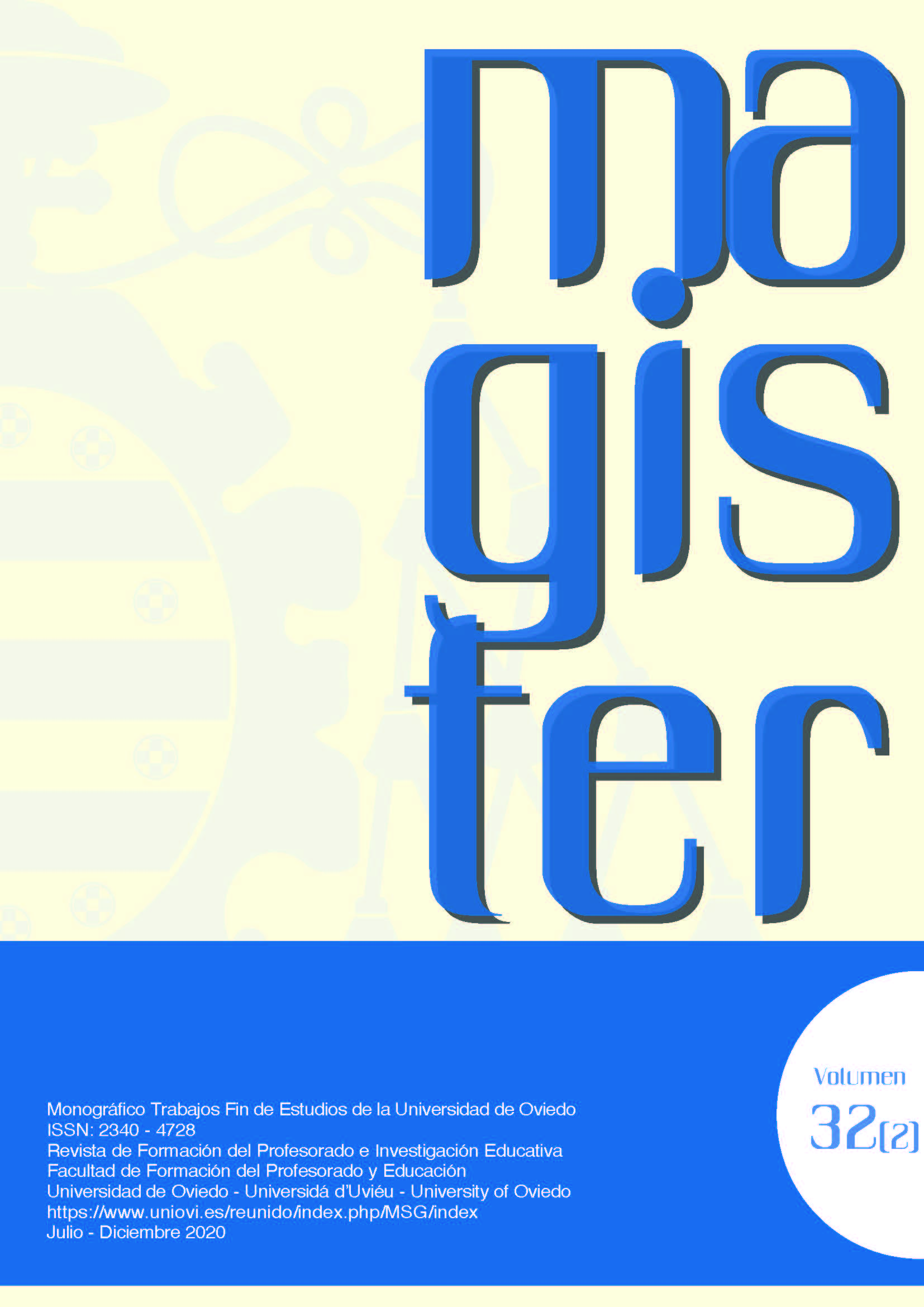Resumen
Los trastornos de ansiedad son los problemas emocionales con mayor prevalencia en
la etapa de Educación Infantil, afectando a un 10-20% de la población en estas edades,
siendo persistentes en el tiempo y predictores de problemas posteriores. Es por ello que
el presente trabajo tiene como objetivo analizar la presencia de ansiedad en un grupo de
estudiantes, tanto desde la perspectiva de las familias como del docente. Para llevar a
cabo el estudio se ha utilizado la Escala de Ansiedad de Spence en un aula con 19 estudiantes
de 3 y 4 años en su versión para familias y para docentes. Los resultados obtenidos
indican bajo nivel de acuerdo entre los datos observados desde ambas perspectivas,
habiendo acuerdo en cuanto a las subescalas de Ansiedad Social y Miedo por la Integridad
Física. Además, solamente se han observado puntuaciones por encima de la media
en lo observado por las familias. Se concluye la importancia de una detección temprana
y de la comunicación familia-escuela.
Citas
American Psychiatric Association. (2013). DSM-5. Diagnostic and statistical manual of mental disorders (5th Edition). Author.
Beesdo, K., Knappe, S., y Pine, D. (2009). Anxiety and anxiety disorders in children and adolescents: developmental issues and implications for DSM-V. Psyquiatric Clinics of North America, 32(2), 483-524.
Bufferd, S., Dougherty, L., Carlson, G., Rose, S., y Klein, D. (2012). Psychiatric disorders in preschoolers: Continuity from ages 3 to 6. American Journal of Psychiatry, 169, 1157-164.
Costello, E., Egger, H., y Angold, A. (2005). The developmental epidemiology of anxiety disorders: Phenomenology, prevalence, and comorbidity. Child and Adolescent Psychiatric Clinics of North America, 14, 631-648.
Dougherty, L., Tolep, M., Bufferd, S., Olino, T., Dyson, M., Traditi, J.,Rose, S., Carlson, G. y Klein, D. (2013). Preschool anxiety disorders: comprehensive assessment of clinical, demographic, temperamental, familial, and life stress correlates. Journal of Clinical Child and Adolescent Psychology, 42(5), 577-589.
Ford, T., Goodman, R., Meltzer, H. (2003). The British child and adolescent mental health survey 1999: the prevalence of DSMIV disorders. Journal of the American Academy of Child and Adolescent Psychiatry 42(10), 1203–1211.
Franz, L., Angold, A., Copeland, W., Costello, J., Towe-Goodman, N. y Egger, H. (2013). Preschool Anxiety Disorders in Pediatric Primary Care: Prevalence and Comorbidity. Journal of the American Academy of Child and Adolescent Psychiatry, 52(12), 1294-1303.
Klitzing, K., White, L., Otto, Y., Fuchs, S., Egger, H. y Klein, A. (2014). Depressive comorbidity in preschool anxiety disorder. Journal of Child Psychology and Psychiatry, 55(10), 1107-1116.
Lavigne, J., LeBailly, S., Hopkins, J., Gouze, K., y Binns, H. (2009). The prevalence of ADHD, ODD, depression, and anxiety in a community sample of 4-year-olds. Journal of Clinical Child and Adolescent Psychology, 38, 315-328.
Manti, F., Giovannone, F., y Sogos, C. (2019). Parental stress of preschool children with generalized anxiety or oppositional defiant disorder. Frontiers in Pediatrics, 7, 415.
Marakovitz, S., Wagmiller, R., Mian, D., y Carter, S. (2011). Lost toy? Monsters under the bed? Contributions of temperament and family factors to early internalizing problems in boys and girls. Journal of Clinical Child and Adolescent Psychology, 40(2) 233-244.
Möller, E., Nikolic, M., Majdandzic, M. y Bögels, S. (2016). Associations between maternal and paternal parenting behaviours, anxiety and its precursors in early childhooh: A meta-analysis. Clinical Psychology Review, 45, 17-33.
Orgilés, M., Penosa, P., Fernández-Martínez, I., Marzo, J. y Espada, J. (2018). Spanish validation of the Spence Preschool Anxiety Scale. Child: Care, Health and Development, 44, 753-758.
Penosa, P. (2017). Ansiedad en Preescolares: Evaluación y Factores Familiares [Tesis Doctoral, Universidad Miguel Hernández].
Real Academia Española. (2001). Diccionario de la lengua española (22.a ed.). Autor.
Rodríguez, P., y Ramos, P. (2010). Trastorno obsesivo-compulsivo en la infancia. Centro de Salud Manzanares el Real, 14- 22. Recuperado de: https://www.sepeap.org/wpcontent/ uploads/2014/02/Ps_inf_trastorno_obsesivo_compulsivo.pdf
Sierra, J. C., Ortega, V., y Zubeidat, I. (2003). Ansiedad, angustia y estrés. Revista Mal-estar e Subjetividade, 3(1), 10-59.
Spence, S., y Rapee, R. (1999). Preschool Anxiety Scale. Recuperado de: https://www.scaswebsite.com/docs/scas-preschool-scale.pdf
Spence, S., Rapee, R., McDonald, C., y Ingram, M. (2001). The structure of anxiety symptoms among preschoolers. Behaviour Research and Therapy, 39(11), 1293-1316.
Spielberger C., Gorusch R. y Lushene R. (1970). STAI. Manual for the state-trait anxiety inventory. Consulting Psychologist Press.
Tortella-Feliu, M. (2014). Los Trastornos de Ansiedad en el DSM5. Cuadernos de medicina psicosomática y psiquiatría de enlace. Re vista iberoamericana de psicosomática, 110, 62-69
Whalen, D. J., Sylvester, C. M., y Luby, J. L. (2017). Depression and anxiety in preschoolers: A review of the past 7 years. Child and Adolescent Psychiatric Clinics, 26(3), 503-522.

Esta obra está bajo una licencia internacional Creative Commons Atribución-NoComercial-SinDerivadas 4.0.
Derechos de autor 2021 Magister


